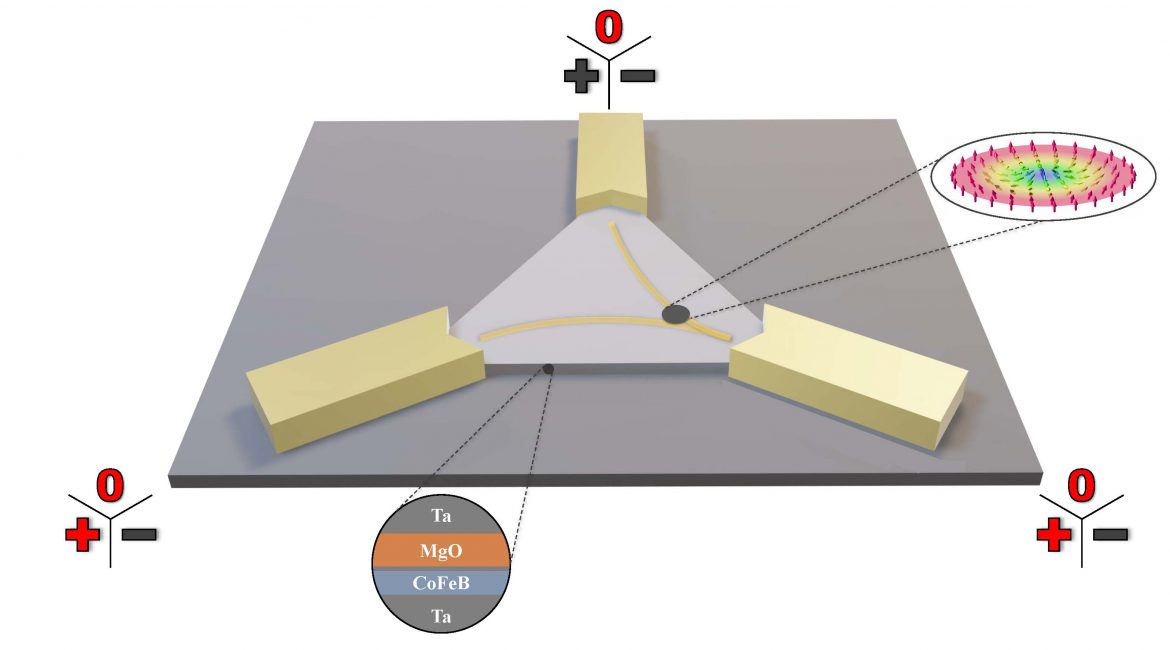| Dec 07, 2022 |
|
(Nanowerk News) A large percentage of energy used today is consumed in the form of electrical power for processing and storing data and for running the relevant terminal equipment and devices. According to predictions, the level of energy used for these purposes will increase even further in the future. Innovative concepts, such as neuromorphic computing, employ energy-saving approaches to solve this problem.
|
In a joint project undertaken by experimental and theoretical physicists at Johannes Gutenberg University Mainz (JGU), known as Brownian reservoir computing, has now been realized. The results were also recently featured as an Editors’ Highlight in the
Devices
section of the scientific journal Nature Communications (“Brownian reservoir computing realized using geometrically confined skyrmion dynamics”).
|
Brownian computing uses ambient thermal energy
|
|
Brownian reservoir computing is a combination of two unconventional computing methods. Brownian computing exploits the fact that computer processes typically run at room temperature so that there is the option of using the surrounding thermal energy and thus cutting down on electricity consumption. The thermal energy used in the computing system is basically the random movement of particles, known as Brownian motion; which explains the name of this computing method.
|
 |
| A magnetic vortex, known as a skyrmion (grey dot), being displaced into the corners of a triangular field by electrical currents, where it bounces off the sides. The potentials shown in red are sufficient for carrying out Boolean logic operations. (Image: Klaus Raab, JGU)
|
Reservoir computing is ideal for exceptionally efficient data processing
|
|
Reservoir computing utilizes the complex response of a physical system to external stimuli, resulting in an extremely resource-efficient way of processing data. Most of the computation is performed by the system itself, which does not require additional energy. Furthermore, this type of reservoir computer can easily be customized to perform various tasks as there is no need to adjust the solid-state system to suit specific requirements.
|
|
A team headed by Professor Mathias Kläui of the Institute of Physics at Mainz University, supported by Professor Johan Mentink of Radboud University Nijmegen in the Netherlands, has now succeeded in developing a prototype that combines these two computing methods. This prototype is able to perform Boolean logic operations, which can be used as standard tests for the validation of reservoir computing.
|
|
The solid-state system selected in this instance consists of metallic thin films exhibiting magnetic skyrmions. These magnetic vortices behave like particles and can be driven by electrical currents. The behavior of skyrmions is influenced not only by the applied current but also by their own Brownian motion. This Brownian motion of skyrmions can result in significantly increased energy savings as the system is automatically reset after each operation and prepared for the next computation.
|
First prototype developed in Mainz
|
|
Although there have been many theoretical concepts for skyrmion-based reservoir computing in recent years, the researchers in Mainz succeeded in developing the first functional prototype only when combining these concepts with the principle of Brownian computing. “The prototype is easy to produce from a lithographic point of view and can theoretically be reduced to a size of just nanometers,” said experimental physicist Klaus Raab. “We owe our success to the excellent collaboration between the experimental and theoretical physicists here at Mainz University,” emphasized theoretical physicist Maarten Brems.
|


